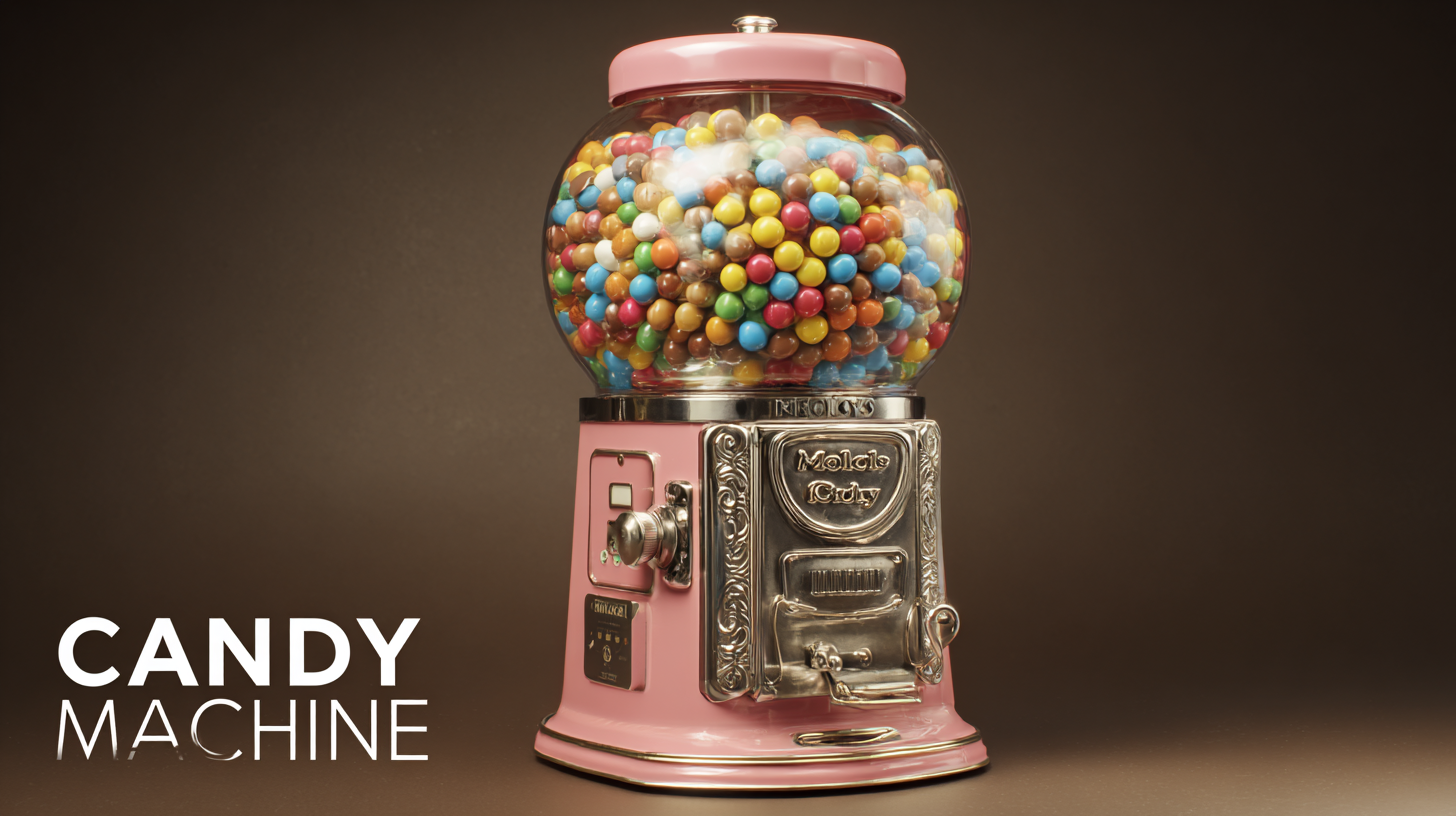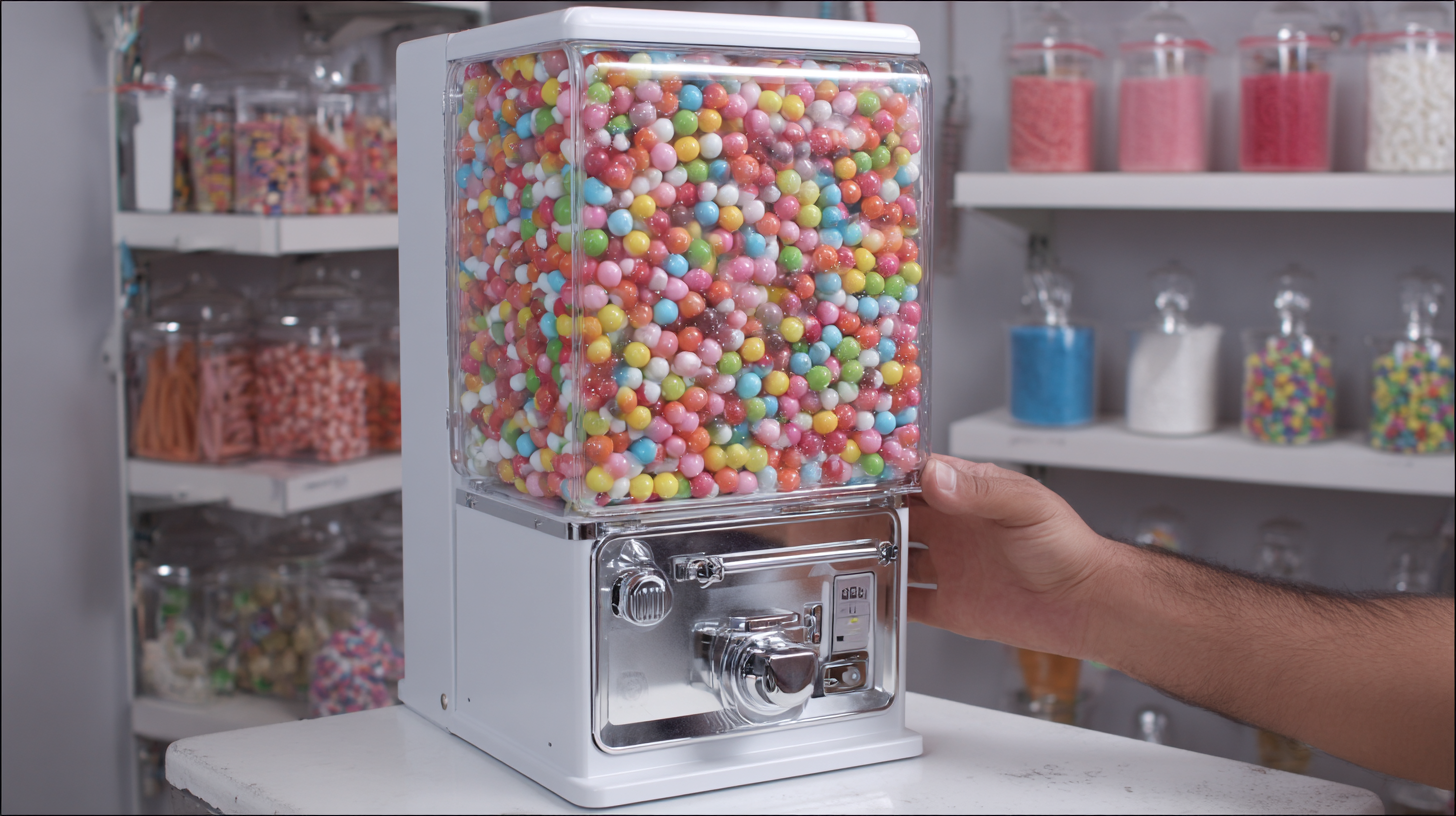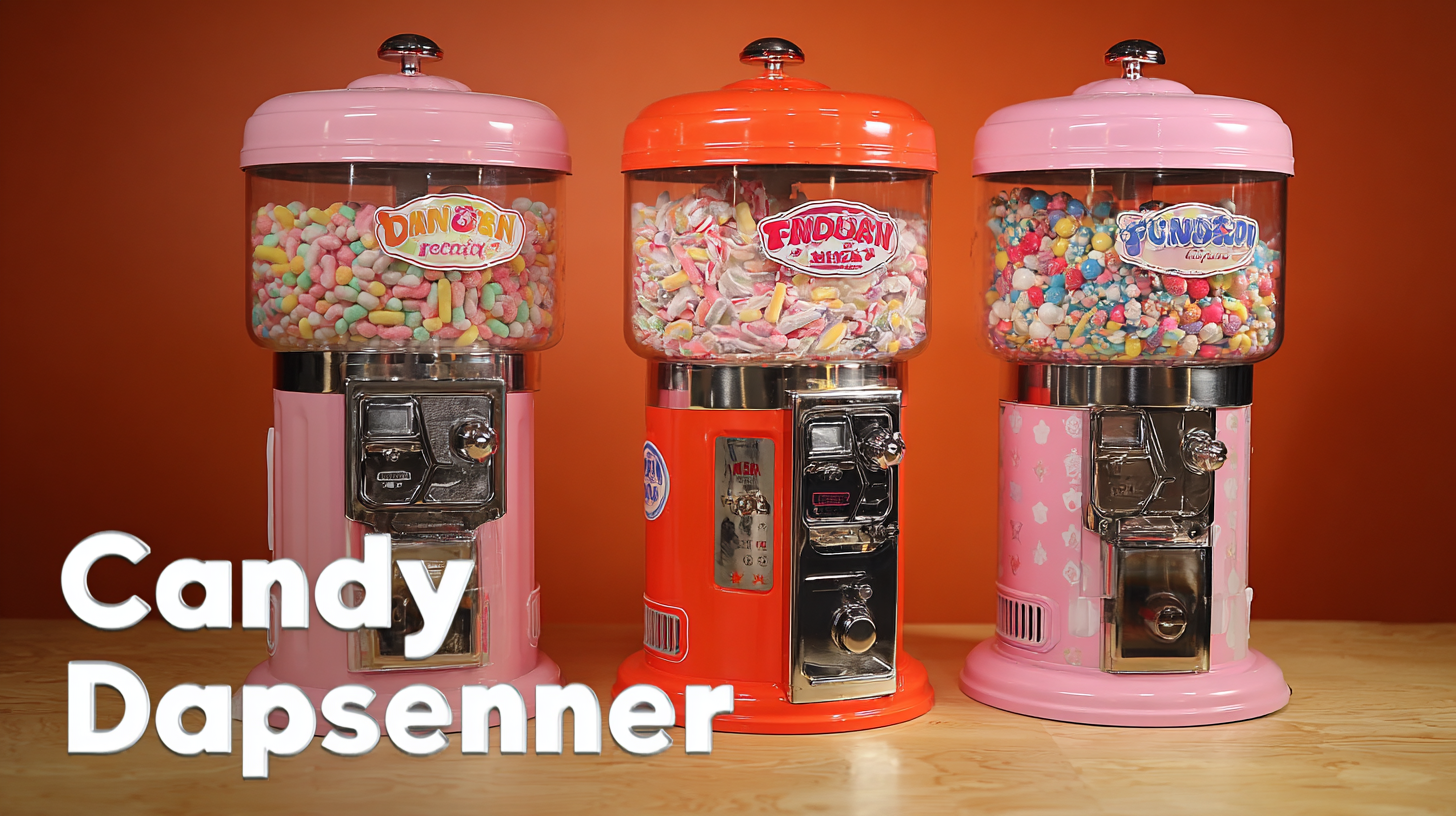2025 Market Trends for Best Candy Dispenser Machines: Success Stories and Insights
As the global market continues to evolve, the candy dispenser machine industry is at the forefront of innovation and growth. According to a recent report by Grand View Research, the market for vending machines, including candy dispensers, is projected to reach $8.6 billion by 2025, driven by increasing consumer demand for convenience and interactive experiences. The trend towards customization and technological integration has transformed traditional candy dispensing into a more engaging activity, appealing to a wide demographic. Amidst this burgeoning market, the phrase “精工细造,中国制造,服务世界” captures the essence of high-quality manufacturing and service excellence that defines successful candy dispenser machine suppliers. This blog will explore the latest market trends, success stories from leading manufacturers, and valuable insights that can shape the future of the candy dispenser machine industry.

Emerging Trends in Candy Dispenser Machines: Market Growth Projections for 2025
The candy dispenser machine market is poised for substantial growth as we approach 2025, reflecting broader trends in the intelligent vending machine sector. With the market size expected to expand from $11.47 billion in 2025 to a staggering $36.89 billion by 2032, the CAGR of 18.2% underscores a significant shift towards automated and cashless solutions. As consumers increasingly demand convenience and innovation, the candy dispenser sector is likely to adopt smarter technology to meet these preferences.

Emerging trends also indicate a growing inclination towards customizable and interactive vending experiences. The integration of digital payment systems and personalized product selections will cater to a tech-savvy consumer base, driving higher engagement and sales. Moreover, as health-conscious trends influence snack choices, candy dispensers may evolve to offer a wider variety of options, including healthier alternatives. With these advancements, 2025 looks set to be a transformative year for candy dispenser machines, capitalizing on the overall upward trajectory of the vending machine market.
Key Features of Gravity-fed vs. Electronic Candy Dispensers: Pros and Cons
As the candy dispensing industry evolves, the choice between gravity-fed and electronic candy dispensers becomes increasingly significant for operators looking to maximize sales and enhance customer experience. According to industry reports, electronic dispensers boast a higher sales conversion rate, with data revealing an increase of up to 30% in impulsive purchases compared to their gravity-fed counterparts. These machines often feature integrated payment systems and touch-free dispensing, appealing to a growing consumer demand for convenience and hygiene.
However, gravity-fed dispensers maintain their charm with lower initial costs and simpler mechanics, often preferred in high-traffic environments where durability and ease of restocking are crucial. The decision ultimately hinges on the location and target audience. For instance, a high-end boutique may benefit from the sleek design of an electronic dispenser, while a bustling theme park might find the straightforward approach of a gravity-fed model more effective.
Tips: Consider the space availability and targeted clientele when choosing a dispenser type. Regular maintenance of both types is essential to ensure optimal performance and cleanliness, which can directly influence customer satisfaction. Additionally, incorporating eye-catching displays or promotional signage can significantly boost visibility and drive sales, regardless of the dispensing technology used.
Consumer Preferences: Analyzing Demographics Driving Candy Dispenser Sales
The candy dispenser market continues to thrive, buoyed by shifts in consumer preferences that reflect changing demographics. According to a recent report from Grand View Research, the global candy dispenser market is projected to reach $2.3 billion by 2025, driven largely by increasing demand in both retail and entertainment sectors. The key demographic influencing this growth comprises younger consumers, particularly millennials and Gen Z, who prioritize unique and interactive experiences when purchasing sweets. This generation emphasizes the playful nature of candy dispensers, making them appealing not only in traditional stores but also in boutique candy shops and entertainment venues.
Moreover, a study by IBISWorld highlights that over 30% of candy consumers in the U.S. are aged 18 to 34, showcasing a trend towards more personalized and customizable candy experiences. This demographic exhibits a preference for visually striking and interactive candy dispenser machines that allow them to select their favorite treats. The rise of social media also plays a crucial role, as these younger consumers are likely to share their candy experiences online, further driving interest and demand. As businesses look to capture this market, understanding and catering to these evolving consumer preferences will be essential for success in the candy dispenser segment.
Success Stories: Case Studies of High-Performing Candy Dispenser Brands
The candy dispenser machine market is thriving, with several brands emerging as clear frontrunners. One standout success story is the candy vending machine company "Sweet Treats," which has transformed traditional candy sales by integrating modern technology. Their machines allow for cashless transactions and feature touchscreens that display real-time inventory, enhancing user experience. By investing in targeted marketing campaigns and partnering with popular candy brands, they have significantly increased foot traffic in high-traffic areas like malls and amusement parks.
Another remarkable case is "Candy Corner," which adopted a community-centered approach. They meticulously chose locations based on local demographics and preferences, offering a variety of candies that appeal to different age groups. Their strong social media presence and interactive campaigns have not only boosted sales but also fostered a loyal customer base. This strategy underlines the importance of understanding market trends and consumer behavior.
Tip: When launching a new candy dispenser machine, consider conducting surveys to pinpoint what flavors and brands are favored by your target audience. This data can guide your inventory choices, ensuring that your machines are stocked with popular items. Additionally, implementing a loyalty program can encourage repeat purchases, boosting both customer satisfaction and revenue.

Innovative Technologies Shaping the Future of Candy Dispenser Machines
The candy dispenser machine market is undergoing a transformation propelled by innovative technologies. One notable advancement is the integration of smart sensors that enhance user experience. These sensors track inventory levels in real-time, allowing operators to restock efficiently and minimize downtime. Moreover, with mobile app connectivity, customers can now interact with machines directly, customizing their selections and even choosing portion sizes, which adds a personalized touch to the candy-buying experience.
Another area of innovation lies in the use of sustainable materials and eco-friendly designs. As consumers become increasingly conscious of environmental issues, manufacturers are responding by creating dispensers that minimize plastic use. Biodegradable materials and refillable systems are gaining traction, promoting not only convenience but also sustainability. This shift not only appeals to eco-conscious consumers but also positions brands as responsible and forward-thinking in a competitive market. By focusing on these innovative technologies, the future of candy dispenser machines looks both exciting and promising.
2025 Market Trends for Best Candy Dispenser Machines: Success Stories and Insights
| Innovation Type | Market Segment | Growth Rate (%) | Key Features | Consumer Preference |
|---|---|---|---|---|
| Smart Dispensers | Retail | 15% | App Integration, Touchless Technology | Health Consciousness |
| Eco-Friendly Materials | Vending Machines | 20% | Biodegradable Components | Sustainability |
| Interactive Designs | Children's Facilities | 10% | Games, Customization Options | Experience-Oriented |
| Cashless Payments | Food Services | 25% | Mobile Payments, Contactless Transactions | Convenience |
| Personalization Features | Online Platforms | 18% | Flavor Choices, Portion Sizes | Individual Choice |
